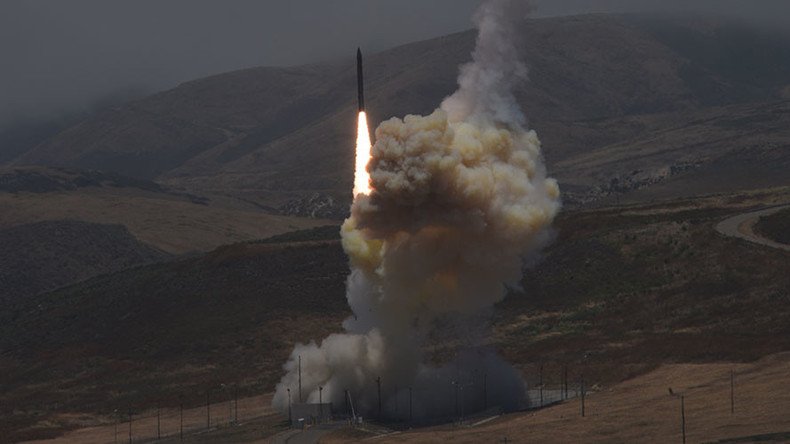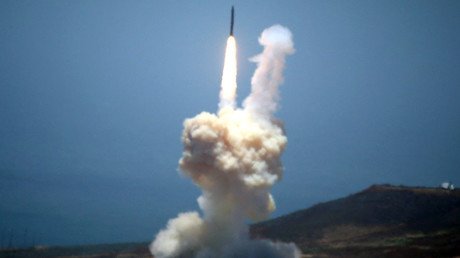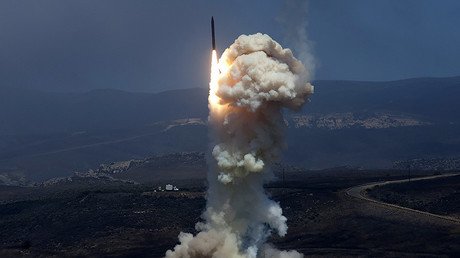‘Critical milestone’: Pentagon hails ICBM intercept test (VIDEO)

The US now has a credible deterrent against intercontinental ballistic missiles, the head of the US Missile Defense Agency said, following the first live-fire successful test of an interceptor against a mock-up ICBM target over the Pacific Ocean.
“The intercept of a complex, threat-representative ICBM target is an incredible accomplishment” for the deployed missile defense system and a “critical milestone” for the program, MDA chief Vice Admiral James D. Syring said in a statement. “This test demonstrates that we have a capable, credible deterrent against a very real threat.”
A Ground-based Midcourse Defense (GMD) interceptor was fired from the Vandenberg Air Force Base in California on Tuesday afternoon. The target vehicle, designed to resemble an ICBM, took off from the Reagan Test Site on Kwajalein Atoll in the Marshall Islands. The intercept took place high above the Pacific Ocean, the agency said.
Kwajalein is approximately 8,000km (4,972 miles) from Los Angeles, California. The Pentagon classifies any missile with a range greater than 3,400 miles as an ICBM.
While the GMD system has been deployed at two sites in Alaska and California, it has never been proven in combat. Of the 17 tests since 1999, only nine have been successful prior to Tuesday’s launch, with the last test conducted in 2014.
“We are replicating our ability to defend the United States of America from North Korea, today,” Riki Ellison, founder of the Missile Defense Advocacy Alliance nonprofit, told Reuters prior to launch.
The Pentagon has insisted that Tuesday’s test was scheduled years in advance, and has nothing to do with current tensions between the US and North Korea over Pyongyang’s continued testing of ballistic missiles.
“This is one element of a broader missile defense strategy that we can use to employ against potential threats,” US Navy Captain Jeff Davis, a Pentagon spokesman, told reporters.
Cost of US missile test simulating incoming ICBM yes'day: $244 million, according to Missile Defense Agency chief Vice Admiral James Syring.
— Jennifer Griffin (@JenGriffinFNC) May 31, 2017
According to Admiral Syring, Tuesday’s test cost $244 million.
A different US missile defense system, Aegis Ashore, has been deployed in Eastern Europe. While Washington claims the system is intended to protect Europe from the alleged threat from Iran, Moscow regards Aegis Ashore as a threat to its own nuclear deterrent.














